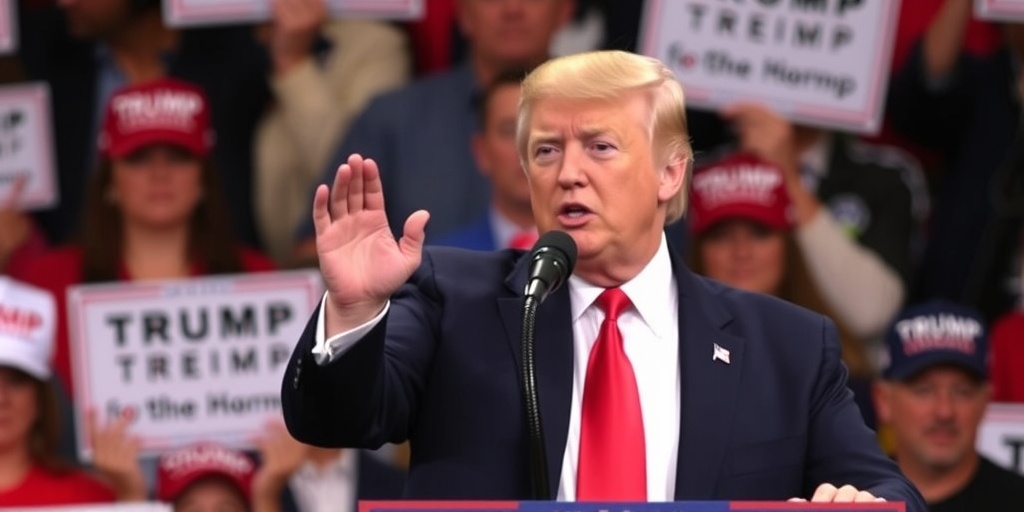Now Reading: Stocks Suffer Largest Loss of 2023 Due to Trump’s Tariff Proposals
-
01
Stocks Suffer Largest Loss of 2023 Due to Trump’s Tariff Proposals
Stocks Suffer Largest Loss of 2023 Due to Trump’s Tariff Proposals

Stocks Experience Significant Decline Amid Tariff Concerns
On Monday afternoon, U.S. stock markets experienced a sharp decline as President Donald Trump confirmed the implementation of tariffs on imports from Canada and Mexico. This announcement came as a disheartening blow for investors who had hoped for a last-minute reprieve from the looming tariffs. The renewed focus on trade tariffs has intensified concerns among market participants that these sweeping duties could negatively impact corporate profits while fueling inflation.
The S&P 500 index saw its most significant single-day drop of the year, sliding by 1.8 percent. Meanwhile, the technology-heavy Nasdaq Composite experienced an even steeper decline of 2.6 percent, bringing it perilously close to entering a "correction" territory—a situation where stocks are down more than 10 percent from their most recent peak. Currently, the Nasdaq remains just over 9 percent below its high reached in mid-December, suggesting a troubling trend as technology stocks have been a critical driver of market performance.
The downturn in the markets coincided with remarks made by President Trump at the White House, where he announced plans to proceed with broad 25 percent tariffs targeting the United States’ two largest trading partners, Canada and Mexico. Additionally, Trump confirmed that a further 10 percent tariff would be placed on goods imported from China, complementing an earlier 10 percent tariff that was implemented the previous month. These developments have sparked fear among investors that the escalating trade war could result in increased prices for consumers in the United States, subsequently pushing the Federal Reserve to maintain elevated interest rates for an extended period. This economic climate raises concerns about the potential for a downturn, with many investors assessing the risks involved.
Monday’s market sell-off extends a series of challenging days for the stock market, which had already been losing momentum throughout February. The S&P 500 index ended the month approximately 1.4 percent lower, as investors grappled with the Trump administration’s shifting policy priorities and an overall decline in consumer sentiment. Concerns surrounding the timing and impact of these tariffs have made many investors uneasy, resulting in a cautious approach to trading.
Another casualty of Monday’s trade-related turmoil was the Russell 2000 index, which tracks smaller companies that typically face higher volatility and are more sensitive to economic fluctuations. This index dropped by 3.1 percent, further cementing its position in what many analysts are referring to as a correction. Since peaking in late November, the Russell 2000 has declined by more than 14 percent, leaving many investors surprised by the abrupt shifts in market dynamics.
Investors closely monitored the VIX, a volatility index often referred to as "Wall Street’s fear gauge." On Monday, the index spiked to 24 points before settling down to around 22 points, still remaining above its long-term average. Such movements indicate a growing unease among traders who are grappling with uncertainties related to corporate earnings and economic growth.
In addition to the tariffs’ potential implications, Monday’s market plunge was exacerbated by disappointing economic indicators. A key manufacturing index for February came in weaker than expected, further rattling investor confidence in the resilience of the economic sector. This softer manufacturing data serves as an additional warning sign, suggesting that growth may be slowing down in a vital part of the economy.
Overall, the confluence of rising tariff concerns, weakening economic indicators, and elevated market volatility underscores a challenging period for U.S. stocks. Investors are left to weigh the potential fallout from ongoing trade tensions while remaining vigilant about the broader economic landscape. As policymakers navigate these treacherous waters, market participants will continue to seek clarity on the path forward amid rising uncertainty. The heightened volatility in the markets may persist as companies and consumers grapple with the implications of higher prices on imported goods.
In conclusion, as trading continues in the coming days, all eyes will be on the administration’s next steps regarding tariffs and how market sentiments shift in response to evolving economic conditions. Investors must remain alert to these developments, as any further announcements or changes could lead to significant recalibrations in market expectations and stock valuations.
Stay Informed With the Latest & Most Important News
Previous Post
Next Post
-
 01New technology breakthrough has everyone talking right now
01New technology breakthrough has everyone talking right now -
 02Unbelievable life hack everyone needs to try today
02Unbelievable life hack everyone needs to try today -
 03Fascinating discovery found buried deep beneath the ocean
03Fascinating discovery found buried deep beneath the ocean -
 04Man invents genius device that solves everyday problems
04Man invents genius device that solves everyday problems -
 05Shocking discovery that changes what we know forever
05Shocking discovery that changes what we know forever -
 06Internet goes wild over celebrity’s unexpected fashion choice
06Internet goes wild over celebrity’s unexpected fashion choice -
 07Rare animal sighting stuns scientists and wildlife lovers
07Rare animal sighting stuns scientists and wildlife lovers





















